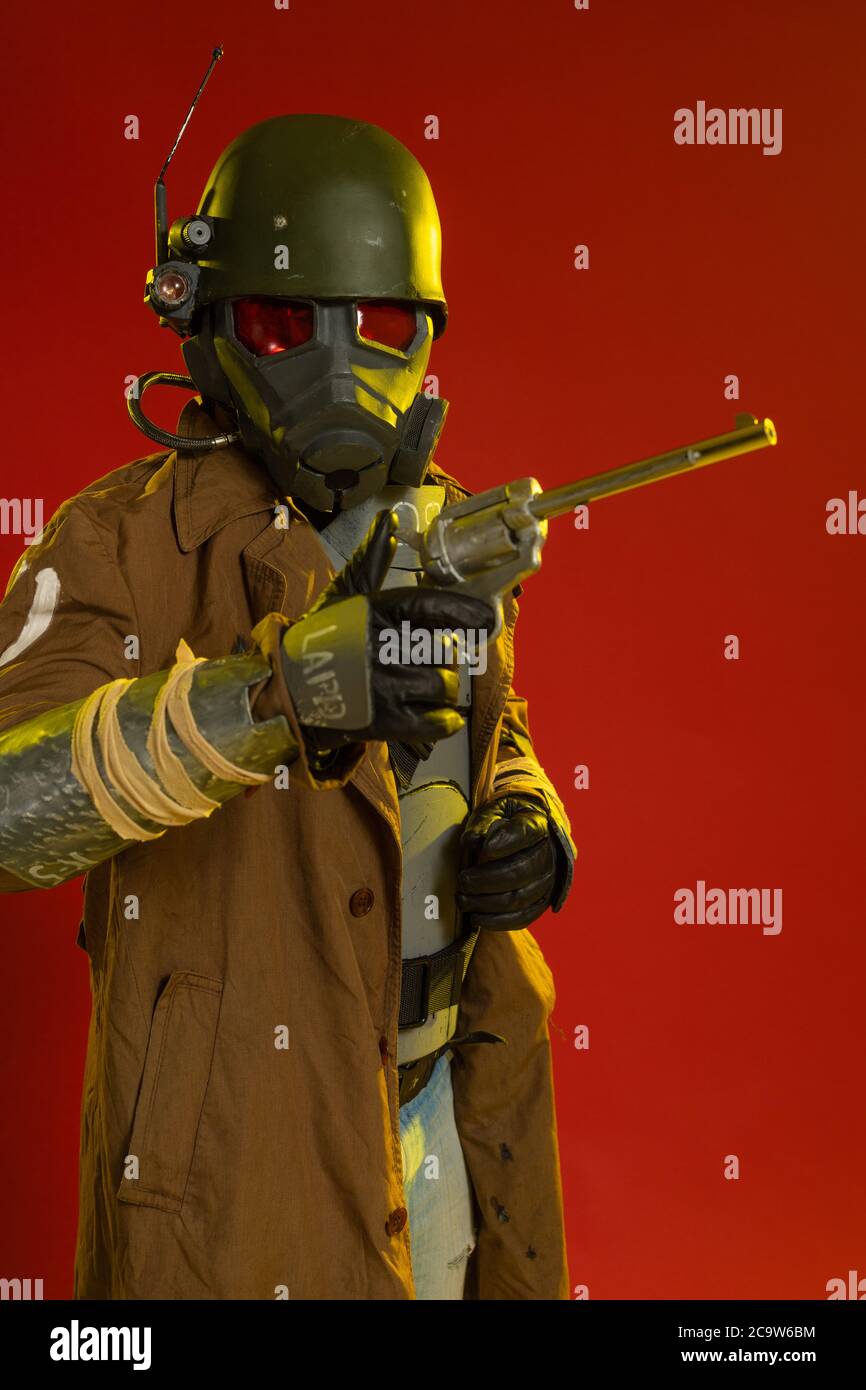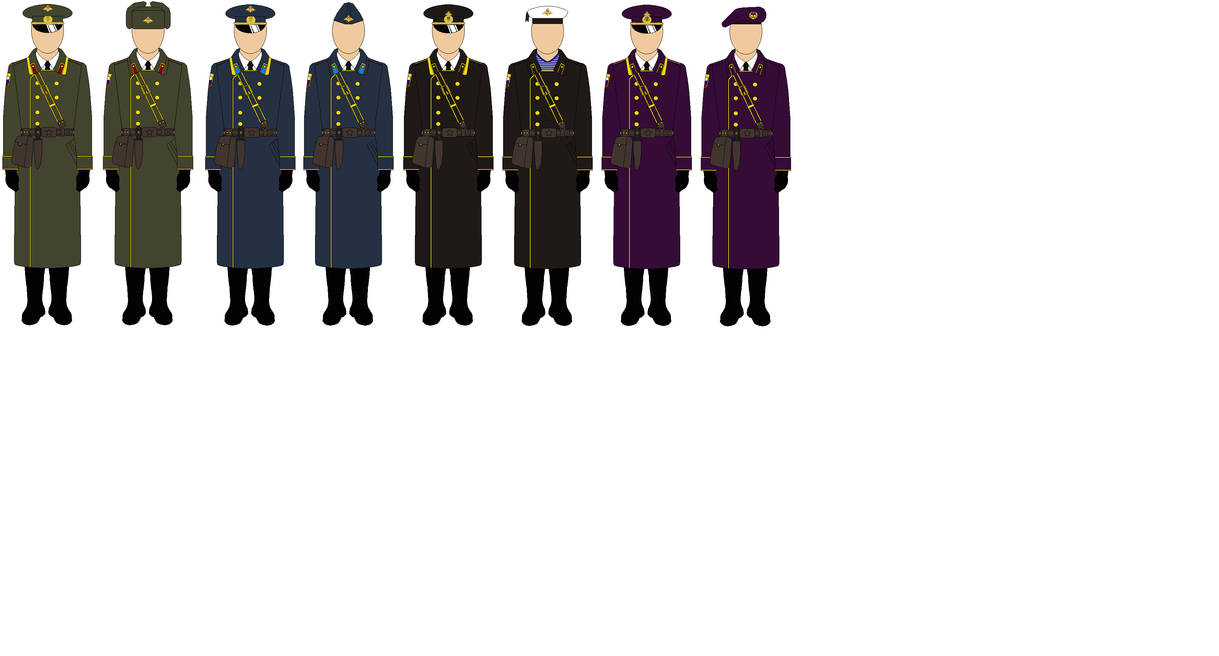Futuristic Military Uniform - As the war turns, armies seek any advantage they can gain against potential enemies. The new Future Force Warrior suit will take human performance to an unprecedented level. Imagine a platoon of costumed soldiers that transform the average person into a real, live superhero.
This is a change from the army's usual pattern of designing uniforms for men and fitting them for women. This strategy has often resulted in a poor fit for female service members and has required services to be regrouped years later to be redesigned.
Futuristic Military Uniform
 Source: thumbs.dreamstime.com
Source: thumbs.dreamstime.com
Soldiers will use a voice-activated pop-up display on the helmet to access information without lowering their weapons. Built into a pair of clear goggles, the display will appear to the soldier as a 17-inch screen. This screen can display real-time maps and video provided by a reconnaissance team, satellite or forward aircraft.
Shields Into Plowshares
According to DeGay, "We are working to have a graphical user interface within computer systems that replicates the PC GUI or even the Playstation 2/Xbox GUI" because many of today's soldiers are already familiar with how they work.
systems. Outside of the emergency services sector, second skin technology will no doubt find a number of other, practical and perhaps fashionable uses. Protection against biohazards will also protect against environmental features such as hay fever pollen, which can be irritating even if not dangerous.
As the technology matures, other health-related opportunities will undoubtedly emerge from second skin technology. The value of enemy intelligence depends on how quickly that information can be transmitted to the soldier on the battlefield. Soldiers of the future will instantly have more information than ever before.
A revolution in military equipment. Those words likely conjure up images of superweapons, or perhaps a new generation of sensors and software. But the next revolution in military equipment may center around one of the most humble yet ubiquitous elements of military gear: the soldier's uniform.
Carbon Nanotubes Go Big
The first civilian application of second skin technology will certainly be for hazmat teams and other first responders. Emergency workers also face the threat of lethal agents to protect against, combined with the need for strength and vigilance, which quickly deplete conventional protective equipment.
 Source: c8.alamy.com
Source: c8.alamy.com
More broadly, the ability of fabrics to "breathe" is essential for comfort, especially in hot weather, making this technology applicable to everything we wear, including curtains, awnings and all kinds of flexible dividers, as well as
industrial filters; a variety of applications across the spectrum from utilitarian to fashionable. But it will be a while before Space Force Guardians wear their new uniforms on a regular basis. Raymond said the service will gather feedback over the next few months and then begin the process of testing the uniform before rolling it out widely.
"Think of yourself on steroids, carrying as much weight as you want for as long as you want," Atkinson said. "It will also allow a 90-pound man or woman to carry a 250-pound man or woman off the battlefield and look like they're carrying a 250-pound person."
A Breath Of Life
"What it will allow you to do is know where a sniper or mortar round is coming from, but at the same time it will eliminate the noise at a certain decibel level so it doesn't damage the soldier's ears," said Robert
Atkinson. , communications sergeant, Task Force Interface Group, Natick Soldier Center. More than a century before the dawn of modern chemistry, carbon was known for its ability to build larger and more complex molecular structures than any other element.
Organic chemistry is mostly about the things you can do with carbon; it's known as the building block of life for good reason. Carbon nanotubes have a wide range of potential uses. for example, they can act as fantastically strong nano-ropes.
As Engadget reports, researchers are also working to develop them as more compact transistors than can be achieved with silicon. With advances in ballistics, militaries must develop better body armor. A type of modern body armor, first developed in the 1960s, is made from advanced woven fibers that can be sewn into vests and other soft clothing.
 Source: images-wixmp-ed30a86b8c4ca887773594c2.wixmp.com
Source: images-wixmp-ed30a86b8c4ca887773594c2.wixmp.com
Military Uniform Builder
More commonly known as Dupont Kevlar®, this is one of many armor solutions currently used by the US military. Another type of body armor, SAPI plates, or "small arms protective insert" plates, are hardened ceramic composite plates that are inserted into a soldier's fragmentation protection vest in the front and rear waist pockets.
Digital fiber can also store a lot of information in memory. The researchers were able to write, store, and read information on the fiber, including a 767-kilobyte full-color short movie file and a 0.48-megabyte music file.
Files can be stored for two months without electricity. Fiber also takes artificial intelligence a few steps further by incorporating a 1,650-connection neural network into the fiber's memory. After sewing it around the armpit of the shirt, the researchers used the fibers to collect 270 minutes of body temperature data from the person wearing the shirt and analyzed how that data corresponded to different physical activities.
Trained on this data, the fiber was able to determine with 96 percent accuracy what activity the person wearing the shirt was engaged in. By developing bionic uniforms for its soldiers, the US military plans to change the logistics of war.
Integrated physiological monitoring, improved communication and enhanced physical strength will give future soldiers the tools they need to defeat their opponents simply by donning a high-tech suit. There are two phases to the Future Force Warrior program.
The first phase involves fielding a uniform in 2010 that will meet the Army's short-term needs, although parts of the uniform may be fielded earlier. According to future warfighter equipment specialist Jean-Louis "Dutch" DeGay, "The Department of the Army has built what are called design spirals, so every two years or so, if a piece of technology is mature, we
we try to get it in the field. , instead of waiting until 2010 to implement the whole system." In 2020, the US military will release a suit that includes nanotechnology, exoskeletons and liquid armor, all of which currently exist only in concept.
 Source: external-preview.redd.it
Source: external-preview.redd.it
Even viruses are too large to pass through the nanotubes, although air and water vapor pass through so freely that the fabric "breathes" better than popular commercial fabrics like Gore-Tex. The chemicals are more compact and can even slide through a nanotube.
The solution is to make the nanotubes smart by introducing functional groups into their molecules to act as guards to block the threat. Kuang Jen-Wu, the leader of the Livermore team, said the fabric "will be like a smart second skin that responds to the environment."
The research, published in Nature Communications, describes how the team created the new fiber. The team embedded hundreds of square microscale silicon digital chips into a precursor that created a polymer fiber. By precisely controlling the flow of the polymer, the researchers created a fiber with a continuous electrical connection between the chips several tens of meters long.
The entire suit is powered by a 2 to 20 watt microturbine generator that runs on liquid hydrocarbon. A single cartridge containing 10 ounces of fuel can power a soldier's uniform for up to six days.
Battery patches integrated into the helmet provide three hours of power reserve. Yoel Fink, a professor in MIT's departments of materials science and engineering, electrical and computer engineering, said digital fibers extend the capabilities of fabrics to reveal the context of patterns hidden in the human body for physical performance monitoring, medical inference and
earlier. discovery. disease detection. Smart breathing adds another range of possible uses. For example, by responding to pheromones released by the body, these fabrics can also respond to our mood. Who knows what fashion designers will come up with when they get their hands on smart fabrics?
Adding an artificial intelligence component to the fiber further enhances its capabilities, the researchers say. Fabrics with digital components can collect a lot of information over time throughout the body, and this lush data is perfect for machine learning algorithms, Locke said.
 Source: images-wixmp-ed30a86b8c4ca887773594c2.wixmp.com
Source: images-wixmp-ed30a86b8c4ca887773594c2.wixmp.com
To better equip its soldiers, the US Army is developing an advanced infantry uniform that will provide superhuman strength and ballistic protection greater than any uniform to date. Additionally, by using large-scale networks and on-board computers, soldiers will be more aware of the activities around them and their troops.
As the Army's National Research Laboratory, ARL operationalizes science to achieve transformative engagement. Through collaboration across the command's core technical competencies, we lead the discovery, development and delivery of technology-based capabilities needed to make Soldiers more successful in winning the nation's wars and returning home safely.
The DEVCOM Army Research Laboratory is part of the US Army's Warfighting Capability Development Command. DEVCOM is the major subordinate command of the Army Future Command. One type of MR fluid consists of tiny iron particles suspended in silicone oil.
Oil prevents particles from rusting. A liquid turns from a liquid to a solid in just milliseconds when a magnetic field or electric current is applied to it. The current causes the iron particles to lock into a uniform polarity and stack on top of each other, creating an impenetrable shield.
How strong a material becomes depends on the strength of the magnetic field or electric current. Once the charge or magnetic field is removed, the particles break open and the material returns to a liquid state.
The MR fluid will fill the small pockets of the Future Force Warrior uniform. The uniforms will be attached with wires to pass an electric current through the fabric. The electric current will be controlled by a computer system and will automatically charge the MR fluid when there is a ballistic threat.
The Future Force Warrior configuration is a significant improvement over these current systems. A computer embedded in the suit and located at the base of the soldier's back will connect to a local and wide area network, allowing data transfer.
 Source: mir-s3-cdn-cf.behance.net
Source: mir-s3-cdn-cf.behance.net
Researchers believe these new, breathable and smart protective fabrics, which can cover every part of the full body suit, helmet and gloves, making it similar to actual combat clothing, could be ready for the field. of the battle within 10 years.
But this technology won't just stay on the battlefield. From radios to paramedics, second skin will soon find civilian applications beyond futuristic military uniforms. The modern era of chemical and biological warfare agents began a hundred years ago with the use of chlorine and mustard gas during the First World War.
Commanders soon discovered that the military value of these agents lay not only in their terrifying effects, but also in their protective properties. was imposed on the defenders. Currently, the US Army uses a system called Blue Force Tracker (BFT).
The system enables the commander to obtain a real-time image of the battlefield from his personal computer. The commander can then track the movement of an individual unit and provide that information to friendly units. The U.S. Marines used BFT, although they initially opted for a more portable and robust system called the Enhanced Position Location Reporting System, or ePLRS.
Both ePLRS and BFT have the same objective of tracking friendly forces in real time. However, the downside of both systems is that they are large, somewhat outdated, and require computers with operators who might otherwise be carrying weapons.
Beginning around the 1970s, what might be called the architectural potential of carbon rose into focus, and nanogloss dates the first true nanotubes—primarily nanoscale tubes or tubes—to 1991. These tubes, built from carbon atoms of connected, they can be only a few times larger in diameter than individual atoms, a feat previously dreamed of or even imagined by engineers.
With this analytical power, the fibers could one day sense and alert soldiers in real time to health changes, such as shortness of breath or an irregular heartbeat, or provide data on muscle activation or heart rate during exercise.
Another important component of battle is communication between soldiers. The Future Force Warrior will use sensors that measure vibrations in the cranial cavity, eliminating the need for an external microphone. This bone-transfer technology allows soldiers to communicate with each other and also controls menus visible through drop-down goggles.
The helmet has 360 degree situational awareness and sound amplification.
future military uniforms, army uniforms for sale, futuristic army uniform, us army uniform guide, future army uniform, futuristic police uniform, us army uniforms, us army dress uniform